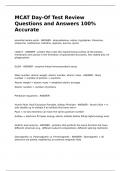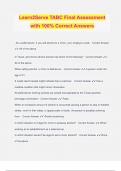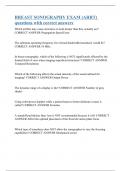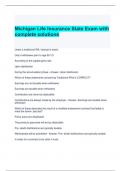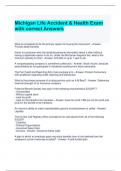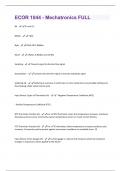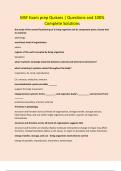Exam (elaborations)
MCAT Day-Of Test Review Questions and Answers 100% Accurate
- Course
- Institution
MCAT Day-Of Test Review Questions and Answers 100% AccurateMCAT Day-Of Test Review Questions and Answers 100% AccurateMCAT Day-Of Test Review Questions and Answers 100% AccurateMCAT Day-Of Test Review Questions and Answers 100% Accurateessential amino acids - ANSWER - phenylalanine, valine, tryptop...
[Show more]
